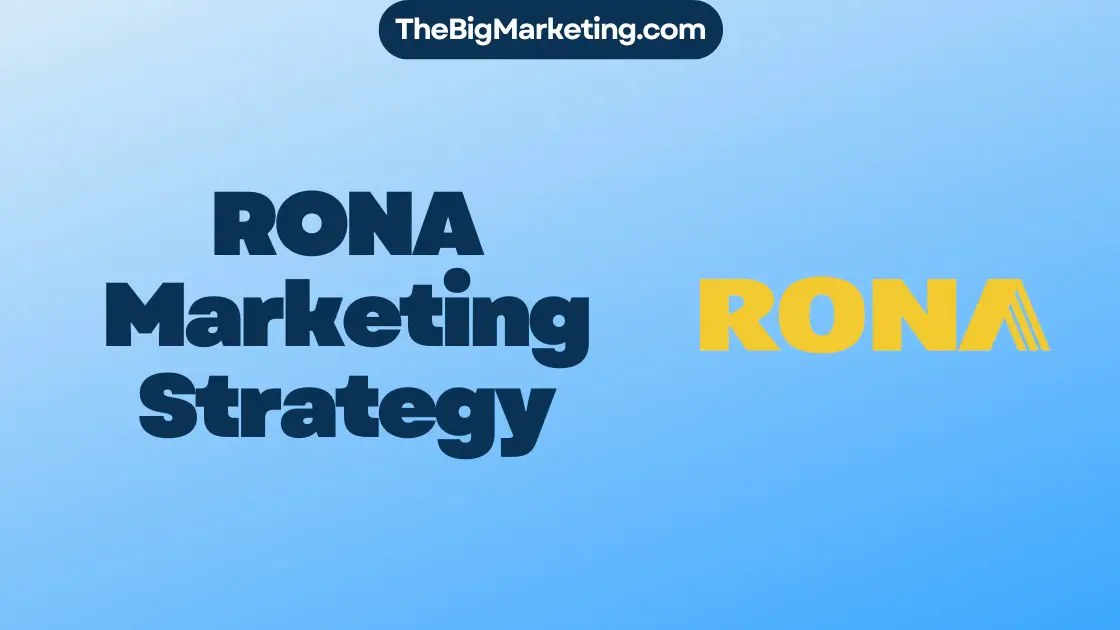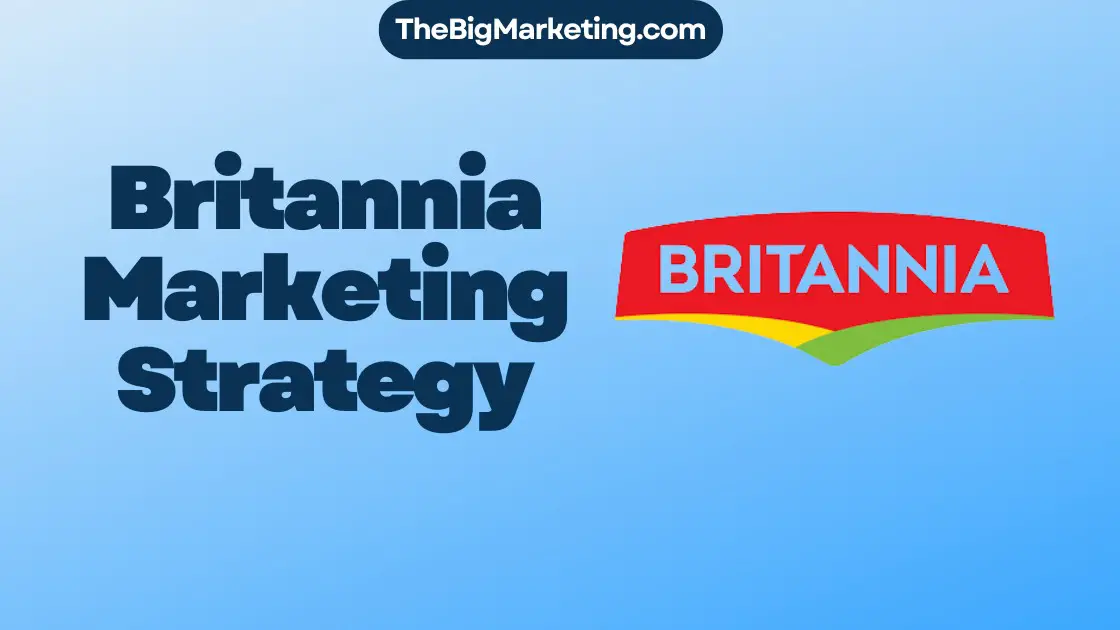Starting a web design business in 2024 presents a world of opportunities. The demand for web design services is on the rise, resulting in a lucrative industry. With the flexibility to choose your work schedule and location, you can achieve a better work-life balance. As a web design entrepreneur, you’ll have creative control over your projects, allowing your vision to come to life. Scalability is another advantage, enabling you to expand your business as your client base grows. Higher earnings, networking opportunities, and personal and professional growth further contribute to the rewards of starting a web design business.
When embarking on this entrepreneurial journey, it’s crucial to select a niche that aligns with your interests and skills. Choosing a niche narrows down your focus, making it easier to establish yourself as an expert in that specific segment. Consider market demand and competition to ensure you select a niche with future growth potential. Additionally, reliable web hosting plays a vital role in the success of your web design business.
Key Takeaways:
- The web design industry offers numerous advantages, including growing demand and the potential for higher earnings.
- Flexibility in work schedule and location allows for a better work-life balance.
- Creative control over projects enables you to bring your vision to life.
- Scalability allows for business expansion as your client base grows.
- Networking opportunities and personal and professional growth are additional benefits.
I will create a template for you and you can complete it after checking it.
Advantages of Starting a Web Design Business
Running your own web design business can be a rewarding and lucrative endeavor. In today’s digital landscape, there is a growing demand for web design services, creating ample opportunities for business growth.
One of the key advantages of starting a web design business is the flexibility it offers. You have the freedom to determine your work schedule and location, providing a better work-life balance. This flexibility allows you to cater to clients’ needs while also attending to personal responsibilities.
As a web design business owner, you have complete creative control over the projects you take on. You can choose the clients and projects that align with your interests and expertise, leading to increased job satisfaction. Creative control empowers you to bring your unique vision to life and deliver exceptional results.
Scalability is another advantage of a web design business. As the demand for your services grows, you can expand your team and take on a larger client base. With effective project management and efficient workflows, scalability allows you to accommodate more clients and increase your revenue potential.
Financial rewards are a significant benefit of running your own web design business. Compared to being an employee, there is a greater potential for higher earnings as you directly reap the rewards of your hard work and expertise. The financial aspect of a web design business can provide a sense of security and freedom.
Running a web design business also opens up networking opportunities. Collaborating with clients, industry professionals, and other entrepreneurs allows you to expand your professional network. Networking can lead to new partnerships, referrals, and collaborations, further fueling your business growth.
Lastly, starting a web design business offers personal and professional growth. You have the chance to constantly learn and evolve in response to industry advancements and client requirements. Your business journey becomes a platform for personal development, allowing you to enhance your skills, expand your knowledge, and achieve new heights.
With so many advantages, it’s no wonder that the web design business is thriving. The combination of growing demand, flexibility, creative control, scalability, financial rewards, networking opportunities, and personal and professional growth make it an enticing venture for aspiring entrepreneurs.
Choosing a Niche for Your Web Design Business
When starting a web design business, one of the key decisions to make is choosing a niche to focus on. Selecting a niche allows you to specialize in a specific segment of the market, enabling you to develop expertise and stand out from your competitors.
By choosing a niche, you can tailor your services and targeted marketing efforts to cater to the specific needs of your chosen segment. This targeted approach can help reduce competition and position your business as the go-to expert in that particular area.
There are several niches within the web design industry that you can consider:
- Ecommerce websites: Focus on designing and developing online stores, optimizing user experience, and integrating payment gateways and inventory management systems.
- Small business websites: Cater to the needs of local businesses, providing them with an effective online presence and customized functionalities.
- Non-profit websites: Specialize in creating engaging websites for non-profit organizations, highlighting their missions and facilitating online donations.
- Portfolio websites: Design visually appealing and user-friendly websites for photographers, artists, and other creative professionals to showcase their work.
- Blogging and content websites: Create websites that prioritize content creation, such as blogs, online magazines, and news portals, offering intuitive navigation and engaging layouts.
- Corporate websites: Serve larger companies and corporations, focusing on creating professional and feature-rich websites that align with their brand identity and business goals.
When choosing a niche, carefully consider your interests, skills, and passions. Evaluate market demand, competition, and future potential. Keep in mind that your chosen niche can evolve as your business grows and as market trends change. Being adaptable and open to refining your niche can help you maintain a competitive edge in the ever-changing web design landscape.
Choosing a niche for your web design business is a strategic decision that can lead to reduced competition, higher rates, and a more targeted client base. By specializing in a specific segment, you can position yourself as an expert and attract clients who value your expertise in their industry.
Selecting Your Services in the Web Design Business
In the web design business, offering a comprehensive range of services is crucial to meet the diverse needs of clients. By providing a wide range of services, you can position your web design business as a one-stop solution for all website-related requirements. When deciding on the services to offer, it is essential to consider your expertise, market needs, and the specific requirements of your target audience. Here are some key services that you should consider including in your web design business:
Website Design and Development
A fundamental service in web design is designing and developing visually appealing and functional websites. This involves creating user-friendly interfaces, incorporating intuitive navigation, and optimizing the website for performance and responsiveness. A seamless website design and development process helps ensure excellent user experience. Partnering with a Webflow design company can streamline this process, offering advanced tools and expertise to build highly customizable and scalable websites. Their focus on clean design and responsive performance ensures the final product aligns with both business goals and user expectations.
Responsive Design
In today’s mobile-dominated world, it is crucial to offer responsive design services. Responsive design ensures that websites adapt and provide an optimal viewing experience across various devices, including desktops, tablets, and smartphones. With more users accessing the internet through mobile devices, responsive design is a must-have service.
Graphic Design
Graphic design plays a vital role in web design, as it helps create visual elements that communicate your brand’s message effectively. This includes designing logos, banners, infographics, and other graphics that enhance the overall aesthetic appeal and brand identity of the website.
User Experience Design
User experience design focuses on creating a seamless and intuitive user journey throughout the website. This involves understanding user behavior, conducting usability testing, and incorporating user-friendly features that enhance the overall user experience.
User Interface Design
User interface design involves designing the visual elements and interactive features that users interact with on a website. This includes creating intuitive navigation menus, buttons, forms, and other elements that make it easy for users to interact with the website and accomplish their goals.
Ecommerce Solutions
If your target market includes businesses that sell products online, offering ecommerce solutions is essential. This includes designing and developing secure and user-friendly online stores, integrating payment gateways, and implementing inventory management systems to facilitate seamless ecommerce transactions.
Content Management System Integration
Integrating a content management system (CMS) into websites allows clients to manage and update their website content easily. Offering CMS integration services enables clients to have control over their website’s content, making it a valuable service to include in your web design business.
Search Engine Optimization
Search engine optimization (SEO) is crucial to ensure websites rank well in search engine results and attract organic traffic. Offering SEO services can help clients improve their website’s visibility, keyword rankings, and overall online presence.
Maintenance and Support
Providing ongoing maintenance and support services ensures that clients’ websites run smoothly and remain up-to-date. This includes performing regular website updates, security checks, and providing technical support to address any issues that may arise.
By offering a comprehensive range of services, you can cater to a wide range of clients and establish your web design business as a trusted and reliable provider. Tailor your services to meet the specific needs of your target market and leverage your expertise to deliver exceptional web design solutions.
Growth-Driven Design as a Web Design Marketing Strategy
Growth-Driven Design (GDD) is a dynamic web design marketing strategy that focuses on continuous improvement and data-driven changes to optimize websites. Unlike traditional web design that relies on a one-time development process, GDD prioritizes real-time response to user behavior and feedback.
By constantly analyzing data and user interactions, businesses can make informed decisions to enhance website performance and user experience. This strategy allows for targeted optimizations that cater to the needs and preferences of the target market, resulting in enhanced client acquisition and improved website performance.
Continuous Improvement and Data-Driven Changes
GDD revolves around the concept of continuous improvement, where websites are optimized based on real-time data and user feedback. This approach ensures that the website remains relevant and effective in meeting the evolving needs of the target market. Through continuous data analysis, businesses can identify areas of improvement and apply data-driven changes to enhance the website’s usability, functionality, and overall performance.
Website Optimization and Real-Time Response
GDD places a strong emphasis on website optimization. By regularly monitoring user behavior, businesses can identify areas where the website may be underperforming or failing to meet user expectations. This proactive approach allows for real-time response to address any issues and make the necessary improvements. Through ongoing optimization, businesses can create a website that delivers an engaging and seamless user experience.
Enhanced Performance and Client Acquisition
The continuous improvement and data-driven nature of GDD lead to enhanced website performance. By optimizing the website based on user behavior and preferences, businesses can create a website that effectively captures the attention of the target market and encourages greater engagement. This, in turn, enhances client acquisition by attracting and converting more leads into customers.
Target Market Relevance
GDD ensures that the website remains aligned with the needs and preferences of the target market. By continuously analyzing data and making data-driven changes, businesses can adapt their website to the changing expectations and demands of their audience. This targeted approach allows for a more personalized user experience, fostering greater customer satisfaction and loyalty.
Key Benefits of Growth-Driven Design
| Benefits | Description |
|---|---|
| Continuous Improvement | GDD enables continuous website improvement for optimal performance. |
| Real-Time Response | GDD allows businesses to respond in real-time to user behavior and feedback. |
| Enhanced Performance | GDD leads to an optimized website that delivers an enhanced user experience. |
| Client Acquisition | GDD helps attract and convert more leads into satisfied customers. |
| Target Market Relevance | GDD ensures the website remains aligned with the changing needs of the target market. |
Implementing Growth-Driven Design as a web design marketing strategy allows businesses to continually improve their website’s performance, attract more clients, and stay ahead in a competitive digital landscape. By leveraging real-time data and making data-driven changes, businesses can create a website that not only meets but exceeds the expectations of the target market.
Staying Ahead with Emerging Technologies in Web Design
Staying ahead in web design requires staying up-to-date with the latest emerging technologies and trends. By embracing these advancements, web agencies can offer cutting-edge solutions to clients and maintain a competitive edge in the industry.
One of the exciting tech trends in web design is the rise of AI-driven chatbots. These chatbots use artificial intelligence to interact with website visitors, providing instant assistance and enhancing user experience. Implementing AI-driven chatbots can improve customer engagement and streamline communication.
Another significant development is the rise of Progressive Web Apps (PWAs). PWAs combine the best features of websites and mobile apps, delivering a seamless and immersive user experience. They offer offline capabilities, faster loading times, and engage users with push notifications. Progressive Web Apps have gained popularity due to their cross-platform compatibility and enhanced performance.
Keeping up with the latest web development frameworks is also crucial for staying ahead in web design. Frameworks like React and Vue.js have revolutionized the way developers build websites. They offer robust tools, reusable components, and efficient workflows that streamline the development process. Choosing the right framework can result in faster-loading websites and improved user experiences.
Being tech-savvy and proactive in adopting emerging technologies in web design is essential for web agencies that want to deliver innovative solutions and meet the evolving needs of clients. By staying informed about the latest trends and advancements, web designers can continue pushing boundaries and delivering exceptional digital experiences.
Exploring Emerging Technologies
Let’s take a closer look at some of the emerging technologies in web design:
- AI-driven chatbots: Enhance user experience and enable instant assistance.
- Progressive Web Apps (PWAs): Combine the benefits of websites and mobile apps for a seamless user experience.
- Web development frameworks like React and Vue.js: Streamline development processes for faster-loading websites.
Building Strong Client Relationships for a Strong Marketing Strategy
Building strong client relationships is a crucial aspect of running a successful web design agency. It goes beyond simply delivering a product or service; it involves fostering connections and trust with clients. Exceptional customer service plays a pivotal role in building and maintaining these relationships.
Providing prompt, friendly, and solution-oriented communication is key to enhancing client satisfaction. By actively listening to their needs and addressing any concerns, you can build trust and ensure that clients feel valued and supported throughout the entire process.
Going the extra mile to exceed expectations is another way to foster strong client relationships. This may involve providing personalized recommendations or additional support beyond the initial scope of the project. By consistently delivering exceptional customer service, you can earn the trust and loyalty of your clients.
Strong client relationships also have the potential to generate word-of-mouth recommendations. Satisfied clients are more likely to refer your agency to others, extending your reach and reputation beyond the digital realm. Word-of-mouth recommendations are a powerful marketing tool that can bolster your client base and bring in new business opportunities.
Furthermore, building strong client relationships contributes to customer retention. By cultivating a positive and collaborative partnership with your clients, you increase the likelihood of repeat business. Retaining existing clients not only boosts your revenue but also saves resources typically spent on acquiring new clients.
To foster connections beyond the digital realm, consider organizing client appreciation events, sending personalized thank-you notes, or providing exclusive access to industry resources. These gestures demonstrate your commitment to building long-term relationships and further solidify client loyalty.
In summary, building strong client relationships is vital for a successful web design agency. Prioritizing exceptional customer service, trust, and ongoing communication is key to cultivating these relationships. By fostering connections beyond the digital realm and exceeding client expectations, you can reap the benefits of word-of-mouth recommendations, increased customer retention, and new business opportunities.
Client Relationship Example
Let’s take a look at an example that illustrates the importance of building strong client relationships. The web design agency “StudioX” was hired to redesign a company’s website. Throughout the project, StudioX consistently provided exceptional customer service, keeping the client informed about the progress and addressing any concerns promptly.
StudioX went beyond the scope of the project by suggesting additional features that would enhance the website’s functionality. This proactive approach impressed the client and ultimately resulted in a website that exceeded their initial expectations.
Due to the outstanding service provided by StudioX, the client recommended the agency to a business partner, leading to another web design project. This not only solidified the client’s loyalty but also expanded StudioX’s client base through word-of-mouth recommendations.
By prioritizing client satisfaction and maintaining strong client relationships, StudioX was able to foster trust, gain referrals, and secure repeat business. This demonstrates the long-term benefits that result from building strong client relationships.
| Benefits of Building Strong Client Relationships | |
|---|---|
| Enhanced client satisfaction | ✓ |
| Trust and loyalty | ✓ |
| Word-of-mouth recommendations | ✓ |
| Increased customer retention | ✓ |
| New business opportunities | ✓ |
Hiring the Right Talent for Your Web Design Agency
When it comes to the success of your web design agency, hiring the right talent is crucial. The digital landscape requires skilled individuals who can contribute to the growth and success of your agency. To find these digital rockstars, it’s important to tap into niche job boards that cater specifically to the web design and development community.
By utilizing niche job boards, you’ll gain access to a diverse talent pool of skilled individuals who have the expertise you’re looking for. These job boards attract professionals who are passionate about web design and are seeking opportunities to showcase their talents. By searching on these platforms, you can identify potential candidates who align with the goals and values of your agency.
When hiring talent for your web design agency, consider the specific skills and expertise you require. Are you in need of an API developer to enhance your agency’s technical capabilities? Or perhaps a tech-savvy WordPress developer to excel in WordPress development projects?
By aligning your hiring process with the needs of your agency, you’ll ensure that you’re bringing in the right individuals who can contribute to the success of your projects. It’s important to consider both technical skills and cultural fit when evaluating potential candidates. Look for individuals who not only possess the technical know-how but also demonstrate a passion for web design and a commitment to delivering exceptional results.
Building a team of skilled individuals who are passionate about web design will help your agency excel in project execution and client satisfaction. These talented professionals will play a key role in meeting the needs and expectations of your clients.
Benefits of Hiring the Right Talent:
- Enhanced technical capabilities for efficient project execution
- Access to a diverse talent pool of skilled individuals
- Ability to meet client needs and exceed expectations
- Increased customer satisfaction and client retention
- Opportunity for innovation and growth within the agency
Remember, hiring the right talent goes beyond skills and qualifications. It’s about finding individuals who are a good fit for your agency’s culture and values. Combining technical expertise with a passion for web design will ensure that your agency thrives in the ever-evolving digital landscape.
Implementing Effective Marketing Strategies for Web Design
Developing and implementing effective marketing strategies is crucial for the success of a web design business. By utilizing a combination of strategic approaches, businesses can enhance their online presence and attract their target audience. Here are some key marketing strategies to consider:
1. Content Marketing
Content marketing involves creating valuable and relevant content to attract and engage the target audience. By consistently producing high-quality content, such as blog posts, articles, and infographics, web design businesses can position themselves as industry thought leaders and build credibility.
2. Social Media Marketing
Social media marketing plays a vital role in promoting web design businesses. Utilizing popular social platforms, such as Facebook, Instagram, and LinkedIn, allows businesses to connect with their target audience, share valuable content, and showcase their portfolio. Social media platforms provide an opportunity to engage with potential clients and establish a strong online presence.
3. Email Marketing
Email marketing is an effective tool for targeting and nurturing leads. By building an email list and designing engaging email campaigns, web design businesses can effectively communicate with their audience. Email marketing allows businesses to share updates, promotions, and valuable content, ultimately leading to increased conversions and customer loyalty.
4. Conversion Rate Optimization
Conversion rate optimization focuses on improving website conversions, such as turning visitors into customers or encouraging them to take desired actions. By analyzing user behavior, conducting A/B testing, and implementing data-driven changes, businesses can optimize their website’s design, layout, and user experience to maximize conversions.
5. Inbound Marketing
Inbound marketing emphasizes attracting and delighting customers through valuable content. By creating informative blog posts, ebooks, and tutorials, web design businesses can provide value to their target audience, establish trust, and generate qualified leads. Inbound marketing techniques include search engine optimization (SEO), content creation, and lead nurturing.
6. Lead Generation Strategies
Identifying and attracting potential clients is crucial for the growth of web design businesses. Implementing lead generation strategies, such as offering free consultations, creating lead magnets, or hosting webinars, can help businesses capture potential clients’ contact information and nurture them through the sales funnel.
7. Analytics and Reporting
Analytics and reporting provide valuable insights into website performance and inform marketing decisions. By tracking website metrics, such as website traffic, bounce rate, and conversion rates, web design businesses can identify areas for improvement and make data-driven marketing decisions. Regular reporting helps businesses measure the effectiveness of their marketing efforts and adjust their strategies accordingly.
By implementing an effective combination of these marketing strategies, web design businesses can increase their online visibility, attract their target audience, generate leads, and ultimately drive business growth.
| Marketing Strategy | Description |
|---|---|
| Content Marketing | Creating valuable and relevant content to attract and engage the target audience. |
| Social Media Marketing | Utilizing popular social platforms to connect with the target audience and showcase expertise. |
| Email Marketing | Targeting and nurturing leads through email campaigns to increase conversions and customer loyalty. |
| Conversion Rate Optimization | Analyzing user behavior to optimize website design and user experience for higher conversions. |
| Inbound Marketing | Attracting and delighting customers through valuable content to establish trust and generate leads. |
| Lead Generation Strategies | Identifying and attracting potential clients through various lead generation techniques. |
| Analytics and Reporting | Utilizing website metrics to gain insights and make data-driven marketing decisions. |
Ensuring Success with Ongoing Education and Professional Development
Ongoing education and professional development are integral to achieving success in the ever-evolving web design industry. Continuous learning allows web designers to stay updated with the latest industry trends and keep pace with evolving technologies. Embracing ongoing education ensures that web designers can offer cutting-edge solutions to clients and stay competitive in the industry.
There are various avenues for web designers to enhance their skills and knowledge. Online courses provide flexible learning opportunities, enabling designers to acquire new skills at their own pace. Workshops and conferences offer immersive learning experiences, allowing designers to network with industry professionals, gain insights, and stay abreast of emerging trends.
Staying informed about industry trends and evolving technologies is crucial in delivering innovative and impactful web design solutions. By continuously expanding their skill set, web designers can adapt to changing client needs, offer enhanced user experiences, and create visually stunning websites.
Benefits of Ongoing Education and Professional Development
The benefits of ongoing education and professional development for web designers are multifaceted:
- Stay Updated with Industry Trends: Continuous learning enables designers to stay informed about the latest industry trends, including emerging design techniques, user experience advancements, and technological innovations.
- Enhance Technical Skills: Ongoing education allows web designers to develop and refine their technical skills, such as coding languages, responsive design, user interface design, and content management systems.
- Expand Design Capabilities: Learning new design techniques and approaches expands designers’ creative capabilities, enabling them to create visually stunning and unique website designs.
- Adapt to Evolving Technologies: Staying updated with evolving technologies, such as AI integration, Progressive Web Apps, and responsive frameworks, helps designers leverage these tools to deliver modern and future-proof web solutions.
- Professional Recognition: Continuous learning and professional development build credibility and professional recognition within the web design industry, positioning designers as experts in their field.
Embracing ongoing education and professional development is a commitment to personal and professional growth. By dedicating time and effort to continuous learning, web designers can enhance their skill set, expand their career opportunities, and deliver exceptional web design solutions that meet and exceed client expectations.
Conclusion
Building a successful web design business requires a comprehensive marketing strategy that encompasses strategic planning, targeted marketing, strong client relationships, talent acquisition, effective marketing strategies, and ongoing education. By incorporating these key elements, web design businesses can thrive in the ever-evolving digital landscape of 2024. Strategic planning sets the foundation for success by outlining business goals and mapping out a clear direction. Targeted marketing ensures that the right audience is reached, maximizing the impact of marketing efforts. Building strong client relationships fosters trust and loyalty, leading to long-term success. Hiring the right talent enhances the agency’s capabilities and execution of projects. Implementing effective marketing strategies, such as content marketing and conversion rate optimization, drives visibility and conversions. Ongoing education and professional development keep web designers at the forefront of industry trends and technologies, ensuring continuous growth and success.
By focusing on these key elements and staying adaptable to industry changes, web design businesses can position themselves as leaders in the competitive marketplace. Strategic planning and targeted marketing enable businesses to identify and capitalize on opportunities. Strong client relationships foster customer loyalty and drive word-of-mouth recommendations. Hiring the right talent ensures the delivery of high-quality projects and contributes to the overall success of the business. Implementing effective marketing strategies amplifies brand visibility and increases conversions. Ongoing education and professional development allow web designers to stay current and offer cutting-edge solutions.
As the web design industry continues to evolve, it is crucial for businesses to stay up-to-date with the latest trends and technologies. By embracing strategic planning, targeted marketing, building strong client relationships, hiring the right talent, implementing effective marketing strategies, and prioritizing ongoing education and professional development, web design businesses can achieve long-term success and stand out in the competitive landscape of 2024.





